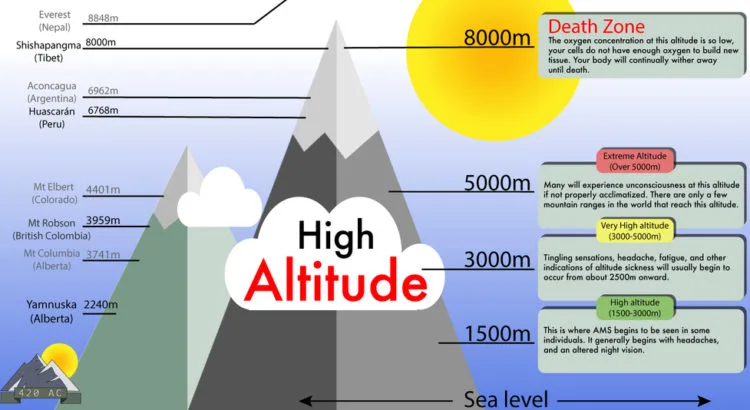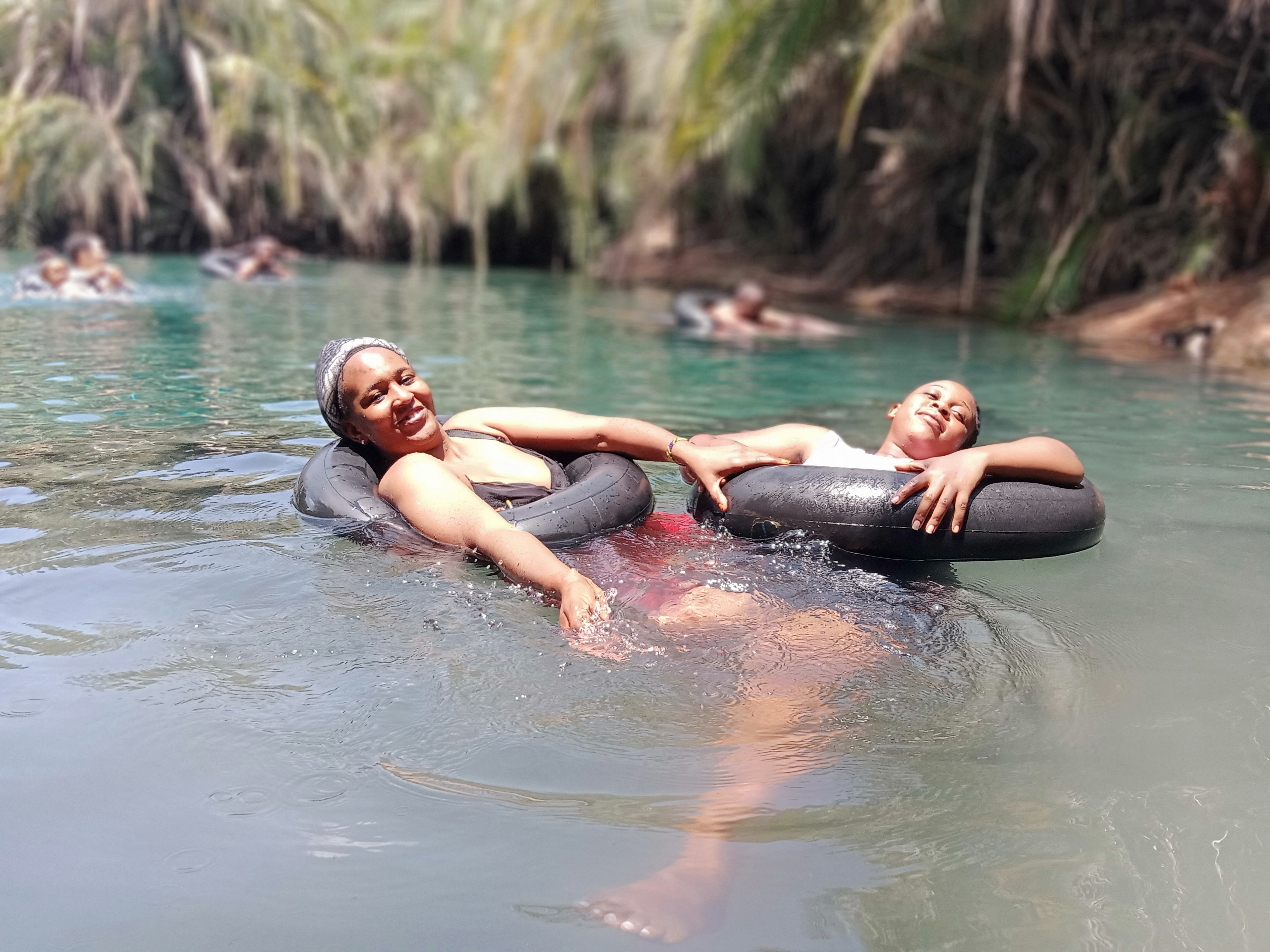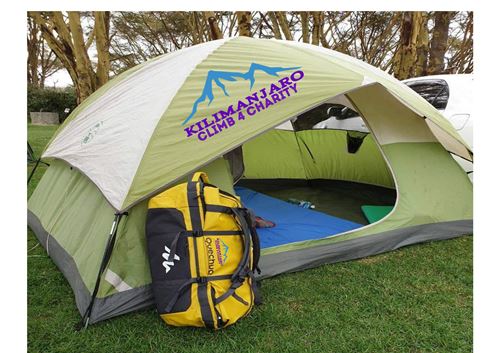The Most Frequently Asked Question About Mount Kilimanjaro.

There are several reasons why a company should consider partnering with the Godson Charity Tanzania.
This is the highest freestanding mountain in Africa, located in Moshi District in the Kilimanjaro region of Tanzania. Rising to approximately 19,341 feet (5,895 meters) above sea level, it boasts diverse ecosystems, from tropical rainforests at its base to arctic-like conditions near its snow-capped summit, known as Uhuru Peak. This dormant stratovolcano, though not extinct, is famous for its iconic glaciers on the equator. Kilimanjaro is a magnet for climbers and trekkers from around the world, offering challenging ascents and a stunning natural spectacle while also holding cultural significance for the local Chaga people. It serves as both a prominent tourism destination and a symbol of natural beauty and wonder.
Climbing Mount Kilimanjaro does not require extensive technical climbing experience, but it demands a good level of physical fitness and mental preparation. Hikers should be capable of sustained hiking for multiple days at high altitudes and be prepared for changing weather conditions. While not a technical climb, it's crucial to acclimatize to the increasing altitude and understand the symptoms of altitude sickness. Most routes do not require prior mountaineering skills, but a determination to persevere through challenging terrain and steep ascents is essential. Hiring a licensed guide and porter is common and highly recommended for logistical support and safety. Hence, Kilimanjaro welcomes climbers of various skill levels, but thorough preparation, fitness, and an understanding of the high-altitude environment are key to a successful ascent.
Climbing Mount Kilimanjaro does not require extensive technical climbing experience, but it demands a good level of physical fitness and mental preparation. Hikers should be capable of sustained hiking for multiple days at high altitudes and be prepared for changing weather conditions. While not a technical climb, it's crucial to acclimatize to the increasing altitude and understand the symptoms of altitude sickness. Most routes do not require prior mountaineering skills, but a determination to persevere through challenging terrain and steep ascents is essential. Hiring a licensed guide and porter is common and highly recommended for logistical support and safety. Overall, Kilimanjaro welcomes climbers of various skill levels, but thorough preparation, fitness, and an understanding of the high-altitude environment are key to a successful ascent.
The easiest route to climb Mount Kilimanjaro is the Rongai Route. It is a 6-7 day route that approaches the mountain from the north and ascends through the forest, moorland, and alpine desert zones. The Rongai Route is less crowded than some of the other routes, and it offers stunning views of the surrounding landscape. The success rate for summiting Kilimanjaro on the Rongai Route is around 85%.
Here are some of the reasons why the Rongai Route is considered to be the easiest route to climb Kilimanjaro:
It has a gentler gradient than some of the other routes.
It offers more gradual acclimatization, as the camps are located at higher altitudes than on some of the other routes.
It is less crowded than some of the other routes, which can make it a more enjoyable experience.
It offers stunning views of the surrounding landscape.
Mount Kilimanjaro poses several dangers to climbers, primarily related to its high altitude. Altitude sickness is a significant concern, with symptoms ranging from headaches and nausea to more severe conditions like high-altitude pulmonary edema (HAPE) or high-altitude cerebral edema (HACE). Rapid changes in altitude and inadequate acclimatization can increase the risk of these illnesses. The extreme cold at higher elevations can lead to hypothermia if climbers are not adequately dressed or prepared. Treacherous terrain, including steep, rocky paths, can pose a risk of slips, falls, or injuries. Weather conditions can change rapidly, with sudden storms and strong winds increasing the danger, particularly on the exposed upper slopes. It's essential for climbers to be aware of these risks, follow safety guidelines, and be prepared physically and mentally for the challenges posed by the mountain.

To support mountain porters during your trek or climb, consider the following actions: Firstly, choose a reputable tour operator or trekking company that treats porters ethically, providing fair wages, proper equipment, and good working conditions. Secondly, be mindful of the weight and size of your luggage, packing only what is essential to reduce the load for porters. Thirdly, engage with and respect your porters as valuable team members; their insights into the local culture and environment can enhance your experience. Lastly, consider contributing to or participating in initiatives that support porter welfare, such as donating to local charities or advocating for fair treatment and better working conditions for porters in the region. These actions ensure a more responsible and ethical trekking experience while actively supporting the well-being of mountain porters.
Choose a responsible tour operator:
When choosing a tour operator, make sure to do your research and choose one that has a good reputation for treating their porters well. There are a number of organizations that can help you with this, such as the
Godson Charity Tanzania .
Tip porters fairly: Porters typically earn very little money, so it is important to tip them fairly. The amount of the tip will vary depending on the length of the trek or climb, but a good rule of thumb is to tip each porter at least $10 per day.
Give porters gifts: In addition to tipping, you can also give porters gifts, such as clothing, shoes, or food. These gifts can be a great way to show your appreciation for their hard work.
Mountain porters face numerous challenges, including inadequate wages, heavy loads, substandard working conditions, and limited access to healthcare. These challenges can be addressed by enforcing fair labor practices, ensuring proper compensation and tipping, setting weight limits for porter loads, providing suitable clothing and equipment, and improving shelter and meals on treks. Promoting education and awareness among travelers about porter rights and welfare can also help. Collaborative efforts between trekking companies, local authorities, and advocacy organizations are crucial in addressing these challenges and creating a safer, more ethical, and sustainable working environment for mountain porters, ensuring they are respected and fairly treated in the trekking and climbing industry.
Donate to a charity: You can also donate to a charity that supports mountain porters. There are a number of organizations that work to improve the lives of mountain porters, such as the
Godson Charity Tanzania .
Join a Charity Climb: Look for charity climbing expeditions organized by reputable tour operators. These expeditions are often partnered with charities, and a portion of the trek cost goes directly to the charity of your choice. Joining such a climb ensures your fundraising efforts are coordinated and supported
Hire experienced and certified guides:All guides should be certified by a reputable organization, such as the Mountain Guide Association of Tanzania (MGA). This means that they have undergone extensive training and have the skills and experience necessary to safely guide climbers on Kilimanjaro. Some examples of reputable organizations that certify mountain guides in Tanzania includes
Godson Charity Tanzania. An organization has strict requirements for certification, which ensures that guides have the necessary skills and experience to safely guide climbers on Kilimanjaro.
Provide adequate gear: All climbers should be provided with adequate gear, such as a backpack, sleeping bag, and raincoat. This gear should be in good condition and should be appropriate for the conditions on Kilimanjaro. Some examples of adequate gear for climbing Kilimanjaro include a backpack, sleeping bag, raincoat, hiking boots, and sun hat. This gear should be in good condition and appropriate for the conditions on Kilimanjaro. For example, the sleeping bag should be rated to the appropriate temperature, and the hiking boots should be comfortable and supportive.
Monitor climbers' health: Guides should monitor climbers' health closely and be prepared to provide medical assistance if necessary. This includes checking their vital signs, such as their heart rate and blood pressure, and looking for signs of altitude sickness or other medical problems. Also be aware of the symptoms of altitude sickness and be prepared to provide medical assistance if necessary.
Be prepared for emergencies: All tour operators should have a plan in place for dealing with emergencies, such as altitude sickness or injuries. This plan should include procedures for evacuating climbers from the mountain and obtaining medical assistance.
Use safe practices: Tour operators should use safe practices when climbing Kilimanjaro. This includes following the guidelines set by the Tanzanian National Parks Authority (TANAPA) and using appropriate safety equipment. For example, TANAPA requires all climbers to be accompanied by a guide and to carry a first-aid kit. Tour operators should also ensure that their guides are using appropriate safety equipment, such as helmets and harnesses.




